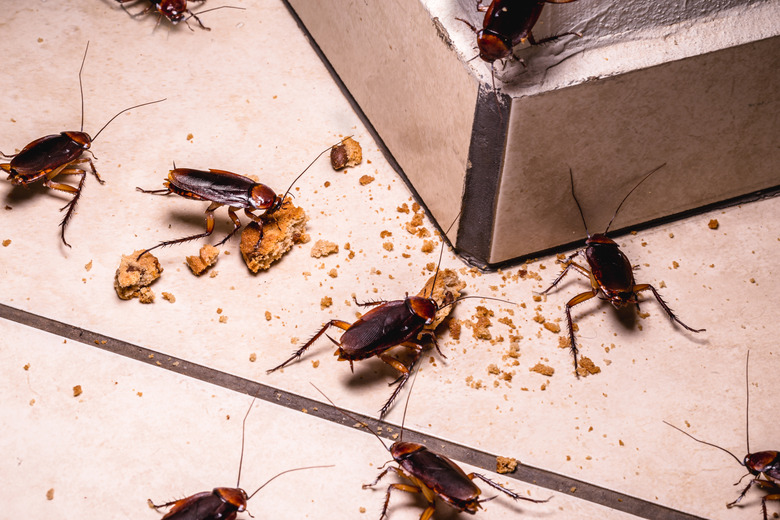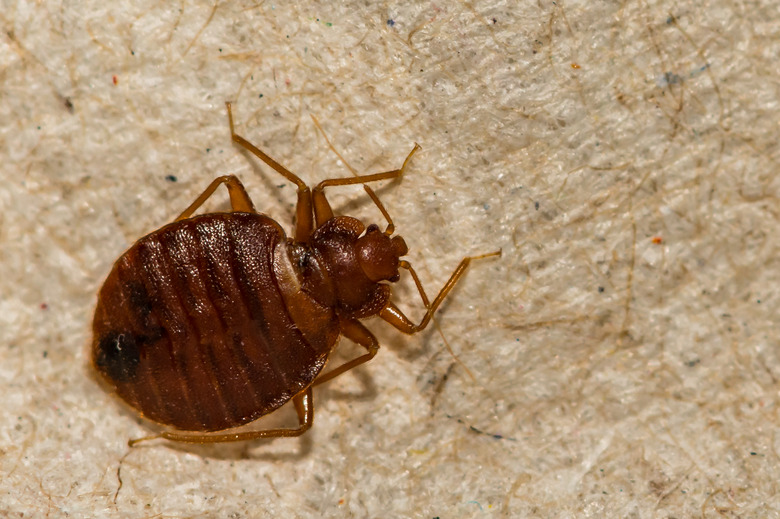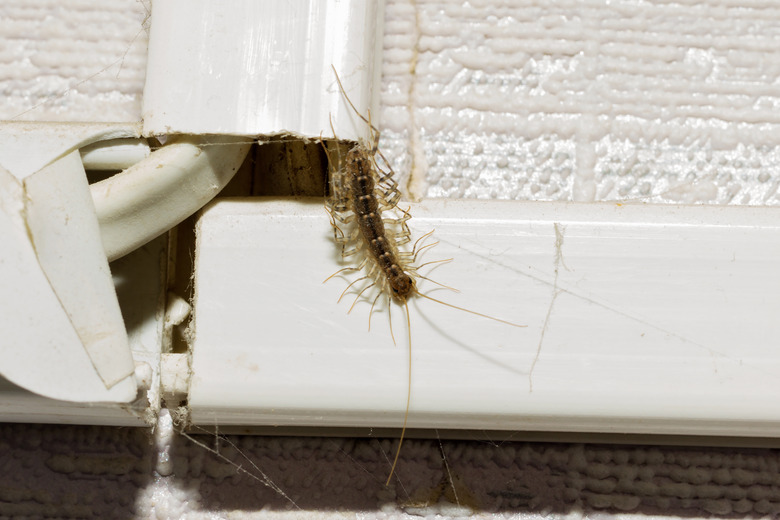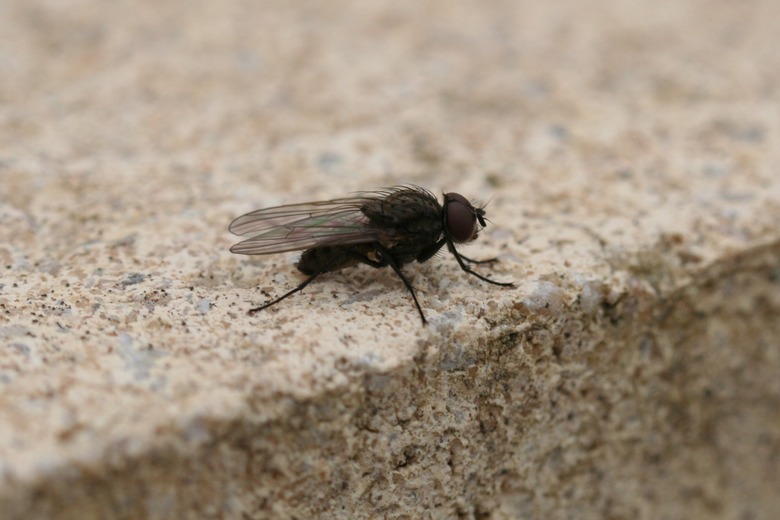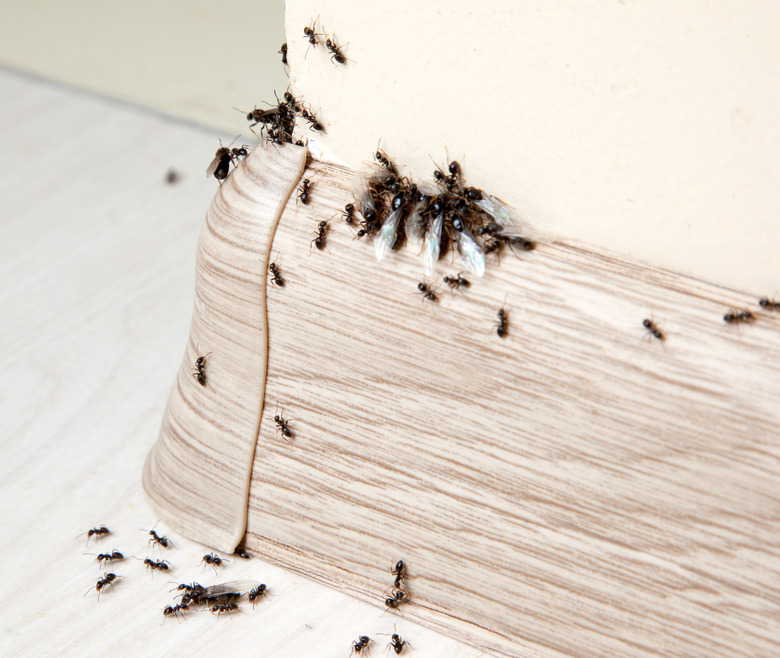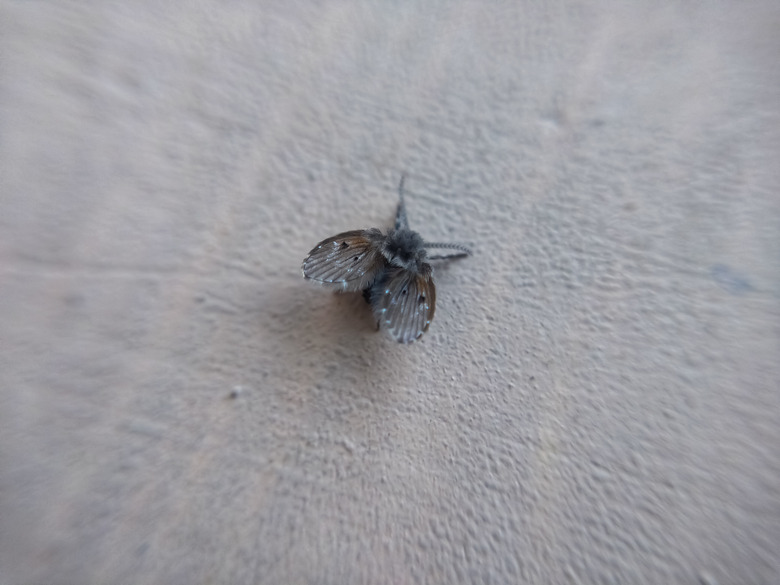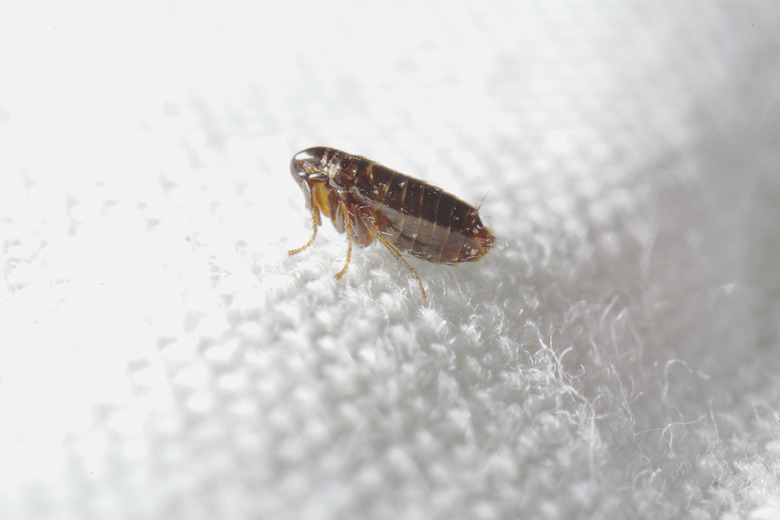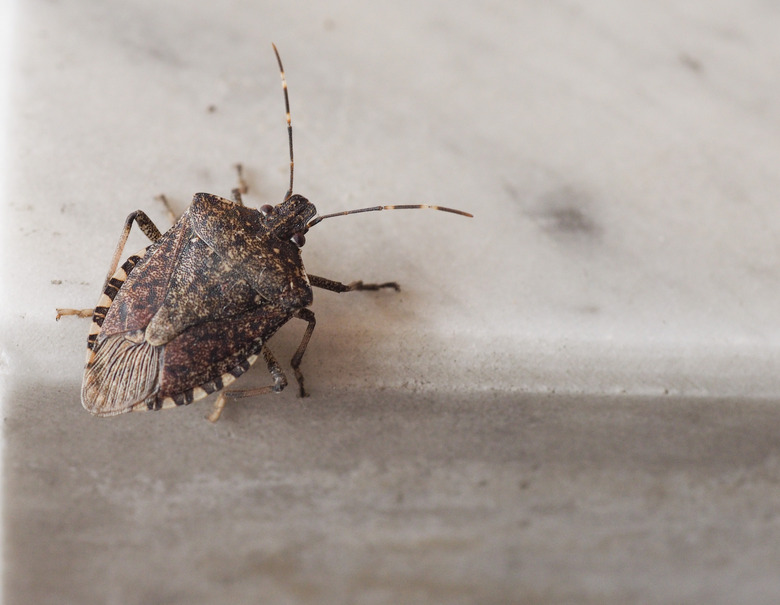The 9 Grossest Bugs In Your House — And How To Get Rid Of Them
We may receive a commission on purchases made from links.
Although one bug does not an infestation make, it's still tempting to burn down your house and start over when you see a super-gross bug in your home. (The temptation is even stronger when you lose sight of the bug before you can introduce it to a heavy shoe.) Fortunately, there are many less drastic ways than arson to get the bugs out of your house. When you're done feeling like it's crawling on you, it's time to get to work on reducing the chance of future insect sightings.
1. Cockroaches
1. Cockroaches
Perhaps the grossest of all insects is the cockroach, which have been known to feast on human nails and can live without their heads for up to a week (yes, it's true). Unfortunately, it's also true that for every roach you see, there are lots more that you don't, so move quickly on this pest problem.
The first step in getting rid of a cockroach infestation is to clean the house. It takes very little food debris to entice roaches to come calling, so make sure you clean your kitchen and other areas where you eat. It's also smart to get rid of clutter, as it gives roaches lots of places to hide. They like moist, dark places close to a food source, so eliminate piles of old newspaper and other attractive piles.
Once you've cleaned, purchase roach baits and place them behind appliances and in other areas likely to host roaches. Choose a bait that the roaches can carry back to their roach friends so you can kill as many as possible. The only downside to this type of bait is that you'll have to resist the urge to kill every roach you see. Dead roaches are admittedly the best kind, but refrain from killing them after baiting because you want the roaches who take the bait to live long enough to carry it home.
2. Bedbugs
2. Bedbugs
Roaches may win the title of most disgusting, but bedbugs are a close second — sucking your blood in your sleep and causing itchy welts all over your body. You can get rid of bedbugs yourself but be warned that the task is a difficult DIY. Begin by removing your bedding. Wash it in the hottest water you can and dry it on high heat as well.
While you're waiting for your laundry, clean any cluttered bedside tables and thoroughly vacuum your mattress. Remove the vacuum cleaner bag and dispose of it outdoors. Next, go over your entire mattress with a steam cleaner, paying special attention to the folds around the edges. When you're done, place your mattress inside a bedbug-proof mattress cover. This will eventually kill any bedbugs still inside your mattress and keep new ones from getting in.
Inspect your bed often and repeat the cleaning and treatment every seven to 10 days until you can't find any trace of bedbugs. It takes professional exterminators four to six weeks to eliminate bedbugs, and doing it yourself can take longer. If you're losing the battle and need to turn to pesticides, contact a professional exterminator. You don't want to spray random insecticide chemicals where you sleep, so stay safe and call a pro.
You can shorten your treatment time by skipping the essential oils, alcohol, dryer sheets and ultrasonic pest repellents. None of these actually work on bedbugs — and none are backed by science either.
3. Centipedes
3. Centipedes
There is some good news when it comes to centipedes. First, they are solitary creatures. If you see one, one is likely all you have. Full-blown centipede infestations are extremely rare. Though they can bite you, it's not typically dangerous — but they can make even the toughest of us squeal at a sighting.
Even better, centipedes eat cockroaches, silverfish, spiders, flies, moths and termites. As such, you may wish to take a live-and-let-live approach to the occasional centipede sighting. If you just can't live with these prehistoric-looking creatures, seal up any holes or cracks in your house with caulk and clean up any areas of moisture. Run a dehumidifier in damp areas to keep down moisture levels.
As a preventive measure, you can spray an insecticide around the outside of your home as well as around the perimeter of your baseboards indoors. Use a child- and pet-friendly product to keep everyone safe. Note that centipede cures will also work on earwigs.
4. House Flies
4. House Flies
Flies represent a double threat: They're equal parts gross and annoying, spreading bacteria all over the house from their legs and wings. Clearly, if you see a fly or two that got into the house, a flyswatter will solve the problem. Sometimes, however, a fly may leave maggots in your home that will hatch into a fly problem.
You can, of course, use tried and true flypaper to catch the flies, but that can be just as bothersome as the flies themselves — if not more so. Instead, take advantage of the fact that flies often hang out around windows. To kill them there, apply self-adhesive window fly baits to the glass. The flies die within a minute of eating the coating on the paper. Since it's a poison and not a trap, these devices won't leave ugly, dead flies stuck to your window.
While you're killing the flies in your home, check to make sure window and door screens are secured and free of holes. Always store food in airtight containers and wipe down kitchen counters and other potential food sources regularly. Use a garbage can with a lid as well. Don't bother with basil, though, as this old wives' tale simply does not work to repel flies no matter how many websites claim otherwise.
5. Ants
5. Ants
Ants — who live to dine on fruits, dog food and any other food sources left on the kitchen counter — tend to be most problematic in the spring and fall, so you may feel like you're dealing with them constantly. Ants, unfortunately, are like cockroaches in that there are probably many more than you see. Getting rid of them, however, is much easier than getting rid of roaches.
Begin by wiping down kitchen counters and other areas where you see ants with a 50/50 water and vinegar mixture. The vinegar disrupts the pheromone trail ants leave behind to direct other ants. Next, purchase ant baits. As with roaches, the goal here is to get the hunting ants to find the bait and bring it back to the colony, where it will kill everybody.
To prevent more ants from entering, seal cracks in your home and trim back bushes and trees away from your house so they don't give ants a convenient bridge from outdoors to indoors. You can also spread cinnamon, cloves, coffee grounds and citrus peels around your house, all of which may repel ants. You can also spread diatomaceous earth around the perimeter of your house.
6. Silverfish
6. Silverfish
Silverfish won't hurt you, but an infestation can do some damage — and these creepy crawlies have less than a comforting appearance. These insects enjoy eating starches, such as paper, books, wallpaper, and cereal, and their starchy excrement can cause further damage to these items. Getting rid of them involves a process similar to evicting other household pests.
First, clean up any clutter and fix moisture issues, keeping things dry with a dehumidifier if necessary. Vacuum carpeted floors regularly, store food in airtight plastic bins, and seal cracks and crevices inside and out. Squeeze a powdered desiccant, such as diatomaceous earth, into cracks and wall voids. Apply your pesticide in the evening when silverfish are most active.
If desired, you can also purchase silverfish traps. Set them near any cracks and crevices where you suspect silverfish are hiding as well as near bookcases, under sinks and in the basement. Make sure silverfish can access the traps but kids and pets can't.
7. Drain Flies
7. Drain Flies
Drain flies reproduce and hang out in the gunk that builds up in your drains and plumbing pipes. (It's really hard to think of something grosser than that.) Fortunately, getting rid of them is pretty easy and doesn't usually require the help of an exterminator.
If you're seeing drain flies hanging out near your sink or bathtub, it's very likely that you have a clog. Begin the extermination process by snaking the drain to break up and remove that clog. When you're done snaking the drain, pour boiling water down the drain. If you're afraid boiling water may crack a surface like enamel, dial the temperature back a bit.
After the water drains, pour 1/2 cup of salt, 1/2 cup of vinegar and a cup of baking soda down the drain. Allow this concoction to sit in the drain overnight, where it can kill any remaining drain flies, larvae or eggs. The next morning, flush the drain with boiling water again.
8. Fleas
8. Fleas
It's bad enough when you find fleas on your pets, but a healthy infestation often means finding them on yourself as well. Getting rid of fleas is tricky and requires you to be ridiculously thorough in your pest control efforts. Fleas travel through your entire home quite quickly and will lay eggs wherever there is fabric.
To get rid of them, begin by washing your pet's bedding and toys in hot water. If the infestation is bad, throw away these items and replace them instead. Launder in hot water your bed sheets and any clothes left on the floor.
Next, vacuum your whole house. This means every inch of carpet, drapery, pillows, upholstered furniture and mattresses so you don't miss any flea eggs. Remember to give your pet a flea bath as well.
If desired, you can also spray your home judiciously with a pet- and child-friendly flea spray. To monitor your flea situation, place a lamp with a naked light bulb next to your pet's food and water. The fleas will jump to the hottest surface (the light bulb) and make it easy to see if you still have a flea problem. If nothing seems to be working, call in an exterminator.
9. Stink Bugs
9. Stink Bugs
Originally from Asia, stink bugs now live all over the United States, where unwary homeowners who smoosh them quickly learn how they got their name — thanks to a pungent scent that has been described as skunk- or rancid meat-like. Stink bugs are quite flat and can easily slide into your home through any cracks or crevices. To prevent this, keep your screens in good repair and tightly seal windows, doors and other possible entry points.
If you see a stink bug, do not smash it. If you do, the foul odor it emits will serve as a powerful lesson not to do it again. Instead, pick up the bug while wearing a rubber glove or plastic bag over your hand and then flush it down the toilet or drop it into a container of soapy water. Never, ever make the mistake of throwing them into a bug zapper, which makes their smell even worse.
Sometimes, stink bugs manage to enter homes in large groups that nestle together in the folds of curtains or behind picture frames. If you find an infestation of stink bugs huddled together, suck them into your vacuum cleaner with the hose attachment, seal the vacuum cleaner bag in a plastic bag and dispose of it outside.
References
- Ortho: How to Get Rid of Cockroaches
- Nextgen Pest Solutions: How To Get Rid of Bed Bugs – The Ultimate Guide for 2021
- Ortho: How to Control & Prevent Centipedes
- Ortho: How to Kill, Control & Prevent Earwigs
- Ortho: How to Kill House Flies
- Ortho: How to Get Rid of Ants in Your House
- PennState Extension: Bristletails (Silverfish and Firebrats)
- Roto-Rooter: How to Get Rid of Drain Flies
- BioAdvanced: How To Get Rid of a Stink Bug
- Arrow Exterminators: Think Roaches Can't Get Any More Disgusting? They Can.
